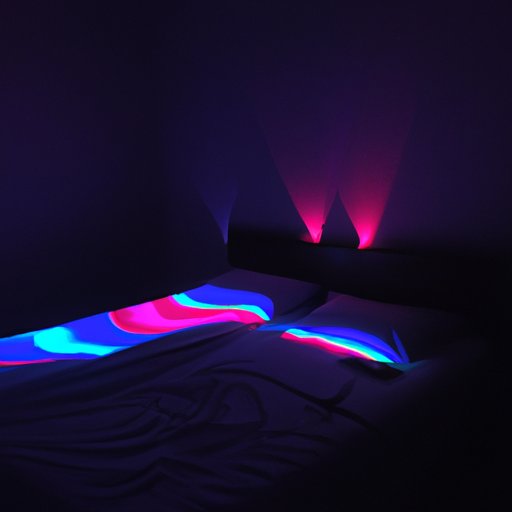Introduction
Sleep is essential for physical, mental, and emotional health. It helps us to restore our energy levels and maintain overall wellness, but sometimes getting a good night’s rest can be difficult. One factor that can impact sleep quality is the type of light we are exposed to before bedtime. Different colors of light have different effects on the body, so it’s important to understand how they can affect our sleep patterns.
Examining the Science of Sleep: What Color Light Is Best for a Good Night’s Rest?
According to a study published in the journal Current Biology, exposure to blue light at night can suppress melatonin production and disrupt the body’s natural circadian rhythm. Melatonin is a hormone that helps to regulate sleep-wake cycles, so if it is suppressed, it can make it harder to fall asleep and stay asleep. Blue light is found in many electronic devices, such as smartphones and televisions, which can make it difficult to get a good night’s rest.
Red light has been shown to have the opposite effect of blue light. A study published in the journal Chronobiology International found that when people were exposed to red light before bedtime, their melatonin levels increased and they reported feeling more refreshed and alert in the morning. Red light is not as stimulating as blue light, so it can help to promote better sleep quality.
Green light is another beneficial color for sleep. According to a study published in the journal Neurobiology of Sleep and Circadian Rhythms, green light can help to reduce the amount of time it takes to fall asleep. Green light is not as stimulating as blue light, so it can help to relax the body and mind and promote better sleep quality.
Shedding Light on the Impact of Color on Sleep Quality
In order to get a better night’s rest, it is important to understand how different colors of light can affect sleep quality. Blue light suppresses melatonin production and can make it harder to fall asleep and stay asleep, while red and green light can help to promote better sleep quality by increasing melatonin levels and helping to relax the body and mind.
It is also important to consider the intensity of the light. Too much light of any color can be disruptive to sleep, so it is important to find a balance between light and darkness. Using dimmers or blackout curtains can help to create a relaxing atmosphere and promote better sleep quality.
Conclusion
Getting a good night’s rest is essential for physical, mental, and emotional health. It is important to understand how different colors of light can affect sleep quality, as blue light suppresses melatonin production and can make it harder to fall asleep and stay asleep, while red and green light can help to increase melatonin levels and promote better sleep quality. It is also important to consider the intensity of the light, as too much light of any color can be disruptive to sleep. By understanding the effects of color light on sleep quality, it is possible to get a better night’s rest with the right color light.
(Note: Is this article not meeting your expectations? Do you have knowledge or insights to share? Unlock new opportunities and expand your reach by joining our authors team. Click Registration to join us and share your expertise with our readers.)
